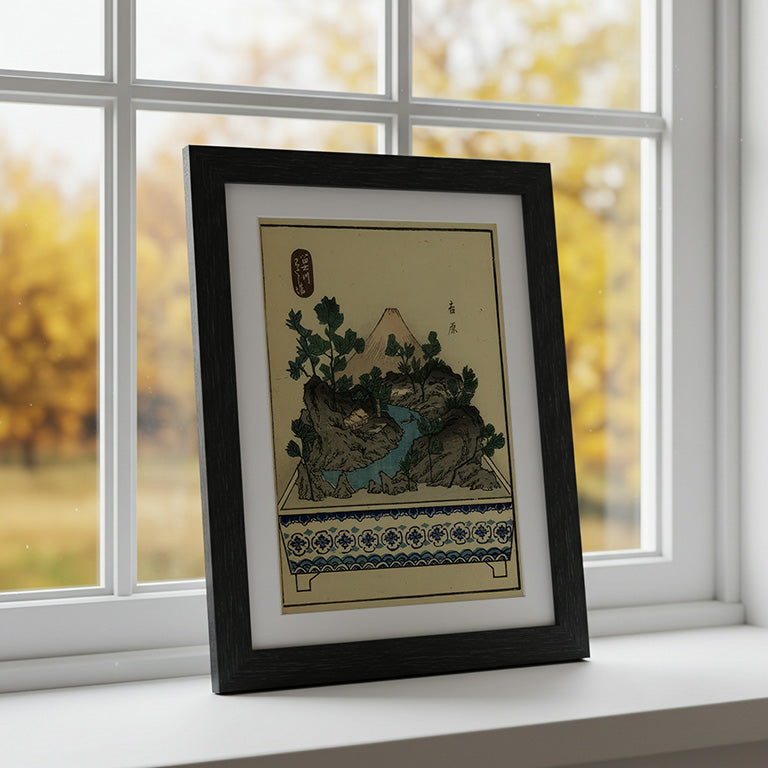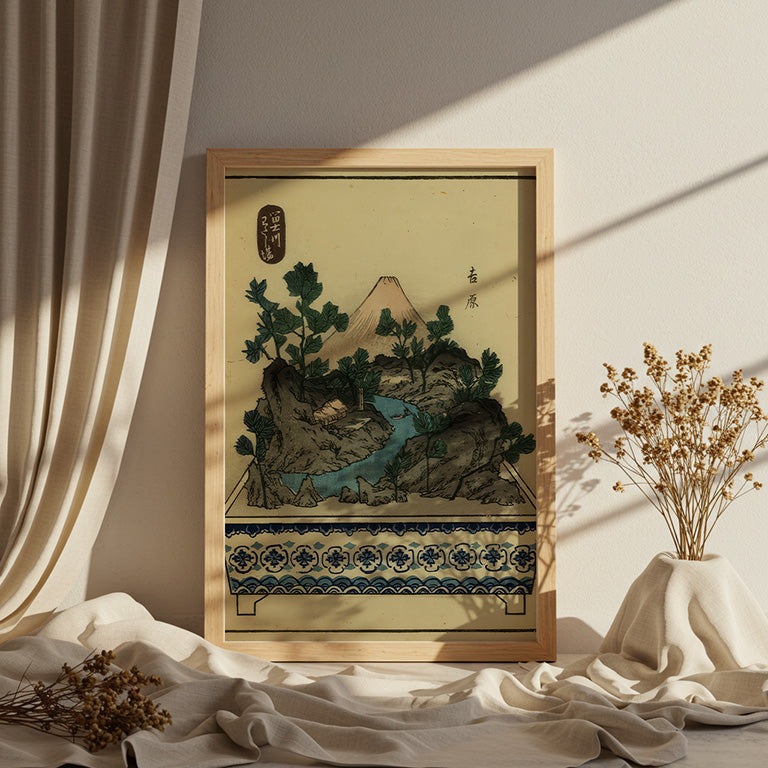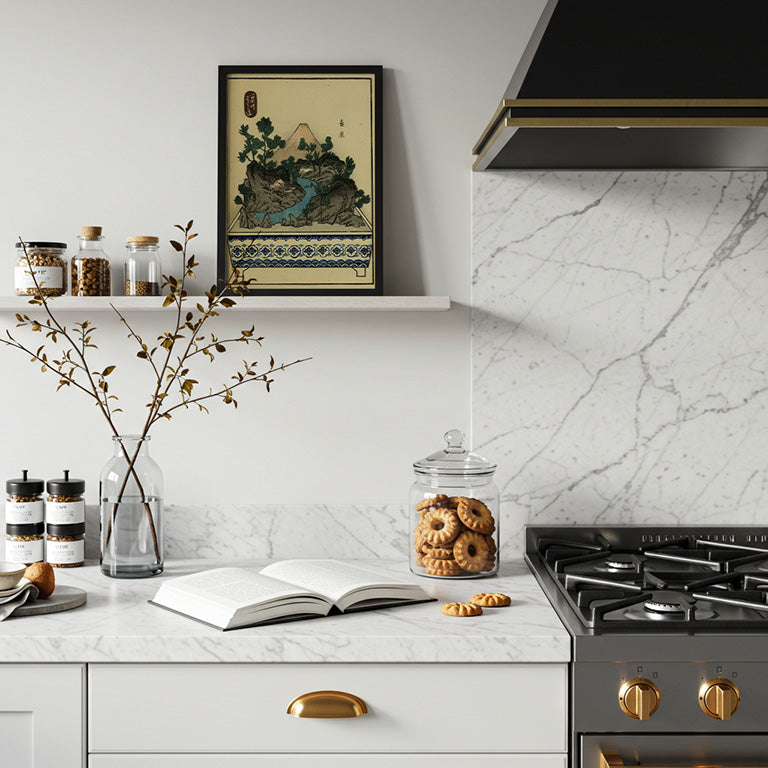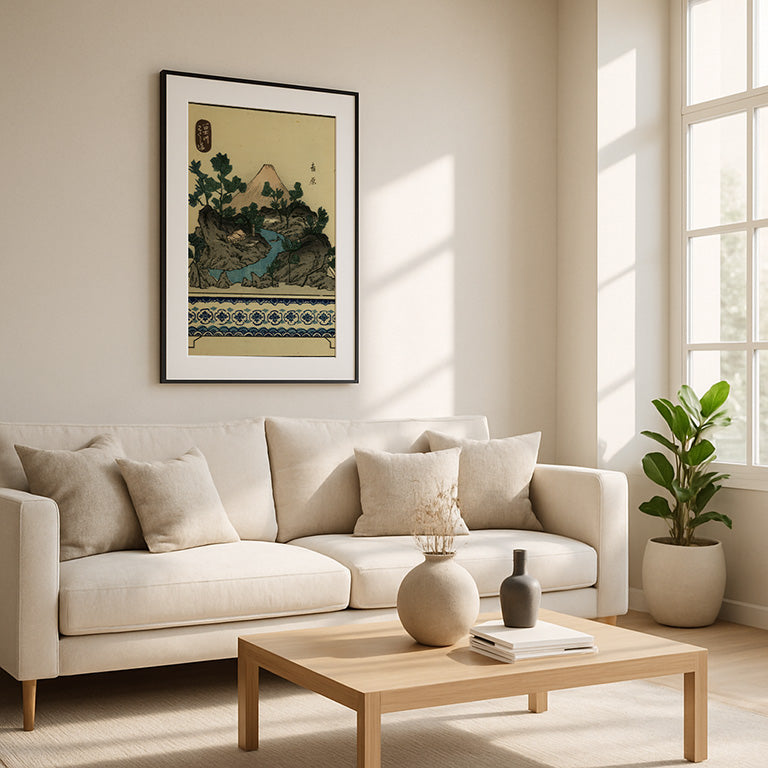"Yoshiwara – Mt. Fuji in a Pot" | Japanese Ukiyo-e Landscape
"Yoshiwara – Mt. Fuji in a Pot" | Japanese Ukiyo-e Landscape
No se pudo cargar la disponibilidad de retiro
Japanese Ukiyo-e Landscape Art Print | 1848 Digital Download from Tōkaidō Series
Bring the majesty of Mount Fuji into your space with Mt. Fuji in a Pot – Yoshiwara, a charming landscape from the 1848 series 53 Stations of the Tōkaidō as Potted Landscapes. This digital print blends the iconic silhouette of Fuji-san with stylized miniature scenery—rivers, boats, trees, and a humble dwelling—all nestled within a beautifully patterned bonsai pot. A captivating blend of Edo-period charm, Japanese travel art, and potted landscape aesthetics.
Ideal for lovers of vintage Japanese prints, zen decor, and miniature nature scenes.
➤ High-resolution digital download
➤ Perfect for printing at home or professionally
➤ Excellent gift for fans of Mt. Fuji, Japanese art, and traditional ukiyo-e illustration

Pixartiko Collective – Usage License
Prints allowed for personal use and resale only as physical products in local shops. Use in other physical goods permitted if pixartiko.com is credited when possible.
Digital resale, sharing, or publishing is strictly forbidden.
Designs are not public domain and cannot be distributed online.
© pixartiko.com – All rights reserved.
Print Sizes
🖼 Included Print Sizes (No Cropping Needed)
This high resolution digital file is optimized for printing at the following standard sizes, no cropping or borders required. Just download, print, and frame:
| Inches | Centimeters | Suggested Use |
|---|---|---|
| 20 x 30 | 50.8 x 76.2 | Gallery posters, premium wall art |
| 16 x 24 | 40.6 x 61.0 | Exhibition prints, home decoration |
| 12 x 18 | 30.5 x 45.7 | Standard posters, frame-ready prints |
| 10 x 15 | 25.4 x 38.1 | Photo enlargements, studio portraits |
| 8 x 12 | 20.3 x 30.5 | Portfolio prints, photo books |
| 6 x 9 | 15.2 x 22.9 | Small art prints, promotional material |
🖨️ All sizes are print-ready at 300 DPI, maintaining the original image ratio. No cropping or borders required.
📂 Your download includes:
- 1 high resolution JPEG file (Aspect Ratio: 2:3 - Portrait).
- Artistic Declaration Certificate in PDF.
- Free gift: The Ages of Painting guide — a visual journey through the history of painting.
🎨 Need a different size or format?
No problem! Just send me a message and I’ll be happy to adapt it for you.
🎧 Art Review
“Yoshiwara”, from the series 53 Stations of the Tōkaidō as Potted Landscapes.
Utagawa Yoshishige, ca. 1848
Few images encapsulate the poetic ambition of Edo-period landscape art with such clarity and invention as Utagawa Yoshishige’s Yoshiwara, a luminous entry in his remarkable series 53 Stations of the Tōkaidō as Potted Landscapes. At once compact and expansive, the work distills an iconic vista into a delicate porcelain vessel, transforming the grandeur of nature into something intimate and contemplative.
Here, Mount Fuji rises at the center like a quiet deity, robed in a gentle gradient of peach and cream, and framed by a lush perimeter of stylized pines. The meandering blue river, delicately painted and almost tactile in its texture, draws the eye inward. Along its banks, a thatched-roof dwelling nestles peacefully, while a lone boatman slips through the current—small but resonant details that ground the mythical in the everyday.
What sets Yoshiwara apart is its masterful equilibrium between simplicity and depth. The composition avoids theatrical flourishes in favor of quiet complexity. Each line and color wash is placed with precision, inviting prolonged observation and meditative reflection. The ornate patterning along the basin’s exterior is more than decorative—it anchors the floating world within a tradition of craftsmanship, further enhancing the illusion of a living, breathing landscape held in suspension.
More than a miniature world, Yoshiwara is a philosophical object. It reminds us of the power of restraint, of scale, and of the interconnectedness between interior space and exterior vision. It is a world seen not with the eye alone, but with a cultivated sense of stillness. In Yoshishige’s hands, the journey along the Tōkaidō becomes not just a passage through space, but a spiritual geography traced in ink, imagination, and porcelain.

Share









